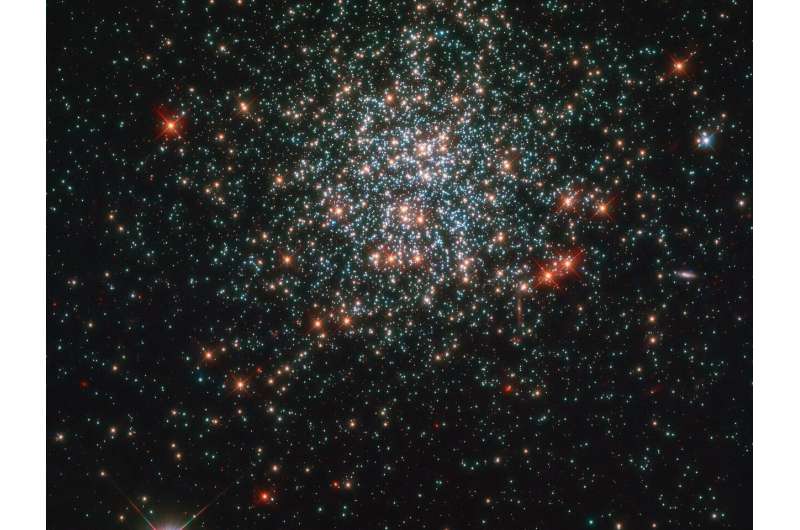Hubble peeks at stellar treats

Looking its best ever is the star cluster NGC 2203, here imaged by the NASA/ESA Hubble Space Telescope. Aside from its dazzling good looks, this cluster of stars contains lots of astronomical treats that have helped astronomers puzzle together the lifetimes of stars.
A main-sequence star is a star in the longest period of its life, when it burns fuel steadily like the sun. Our sun's fuel will run out in approximately 6 billion years, and it will then move on to the next stage of its life when it becomes a red giant. Astronomers studying NGC 2203, which contains stars that are roughly twice as massive as our sun, found that rotation rates might be a factor as to why some of the stars stay longer than usual in this main-sequence phase of their life.
Provided by NASA's Goddard Space Flight Center





















